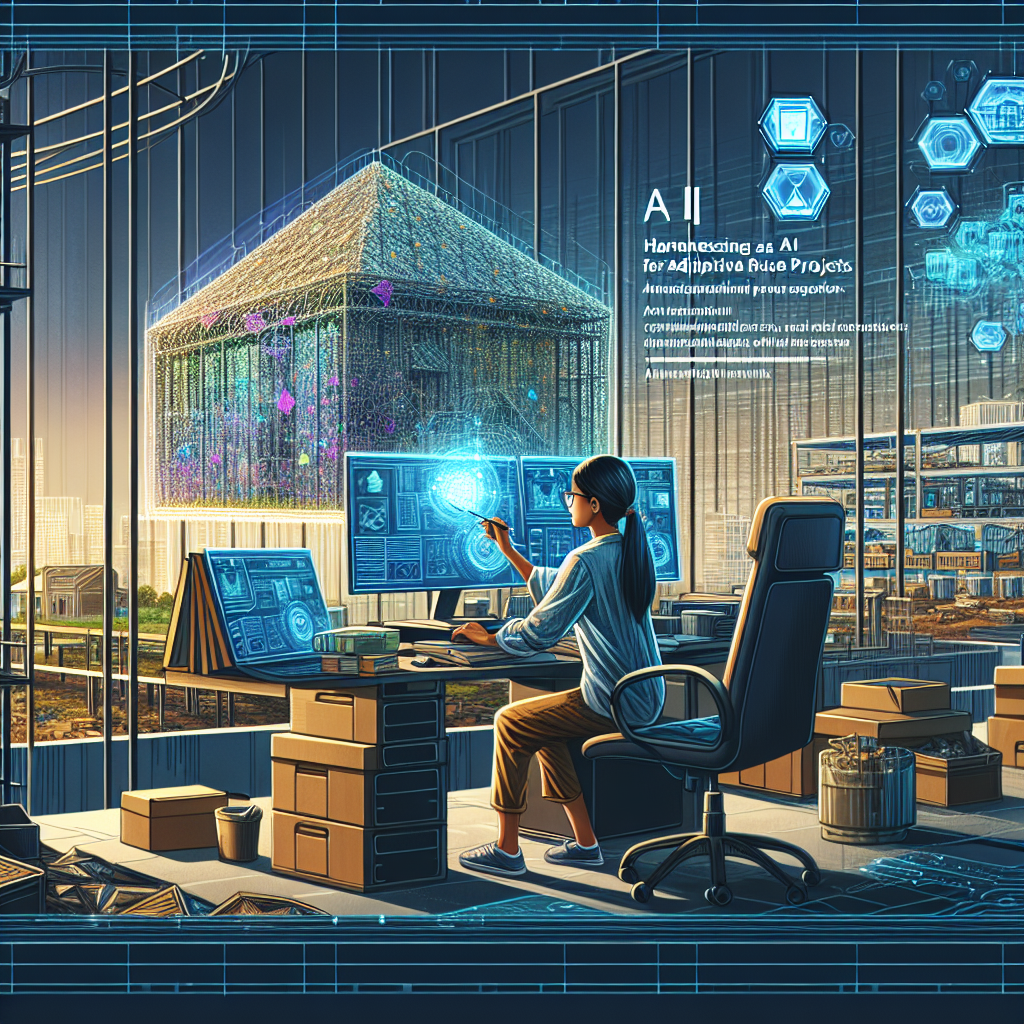Adaptive reuse projects have become increasingly popular in recent years as a sustainable and cost-effective way to repurpose existing buildings for new uses. With the rise of artificial intelligence (AI) technology, developers and architects are now able to harness the power of AI to enhance the adaptive reuse process and create more innovative and efficient designs. In this article, we will explore how AI can be used in adaptive reuse projects and the benefits it can bring to the industry.
What is Adaptive Reuse?
Adaptive reuse is the process of repurposing existing buildings or structures for new uses, rather than demolishing them and building something new. This practice not only helps to preserve the history and character of a building but also reduces waste and carbon emissions associated with new construction. Adaptive reuse projects can range from converting old factories into residential lofts, turning warehouses into office spaces, or transforming churches into restaurants.
How is AI Used in Adaptive Reuse Projects?
AI technology can be used in various ways to enhance the adaptive reuse process and make it more efficient and effective. Here are some ways in which AI can be harnessed for adaptive reuse projects:
1. Building Information Modeling (BIM): BIM is a process that involves creating digital representations of buildings and their components. AI can be used to analyze these models and identify potential areas for improvement or optimization in the adaptive reuse process. By using AI-powered BIM software, architects and developers can simulate different design scenarios and evaluate their impact on the building’s performance and sustainability.
2. Energy Efficiency: AI can also be used to optimize the energy efficiency of adaptive reuse projects. By analyzing data on building usage, occupancy patterns, and environmental conditions, AI algorithms can recommend energy-saving strategies such as smart lighting systems, HVAC controls, and insulation upgrades. This can help reduce energy costs and make the building more sustainable in the long run.
3. Material Selection: AI can assist in the selection of materials for adaptive reuse projects by analyzing data on the availability, cost, and environmental impact of different materials. By using AI algorithms, architects and developers can make more informed decisions about which materials to use in their projects, taking into account factors such as durability, sustainability, and aesthetics.
4. Space Optimization: AI can help optimize the use of space in adaptive reuse projects by analyzing data on building layouts, occupancy patterns, and user preferences. By using AI-powered space planning software, architects can design more efficient and flexible spaces that meet the needs of the building’s occupants and maximize usage of available square footage.
5. Predictive Maintenance: AI can be used to predict and prevent maintenance issues in adaptive reuse projects. By analyzing data on the building’s systems and components, AI algorithms can identify potential problems before they occur and recommend preventive maintenance strategies. This can help reduce downtime and repair costs, as well as prolong the lifespan of the building.
Benefits of Harnessing AI for Adaptive Reuse Projects
There are several benefits to using AI technology in adaptive reuse projects:
1. Cost Savings: By optimizing the design and energy efficiency of adaptive reuse projects, AI can help reduce construction and operating costs. This can make adaptive reuse projects more financially viable and attractive to developers and investors.
2. Sustainability: AI can help make adaptive reuse projects more sustainable by optimizing energy usage, material selection, and space utilization. This can help reduce the environmental impact of the project and contribute to a more sustainable built environment.
3. Innovation: AI technology enables architects and developers to explore new design possibilities and create more innovative and creative solutions for adaptive reuse projects. This can lead to more unique and engaging spaces that meet the needs of modern users.
4. Efficiency: By automating tasks such as building analysis, material selection, and space optimization, AI can help streamline the adaptive reuse process and make it more efficient and productive. This can save time and resources and ensure that projects are completed on schedule and within budget.
5. Data-Driven Decision-Making: AI technology provides architects and developers with valuable data and insights that can inform their design decisions and help them make more informed choices. By using AI algorithms to analyze data on building performance, user behavior, and environmental conditions, designers can create more responsive and user-centric spaces.
FAQs
Q: How can AI help optimize energy efficiency in adaptive reuse projects?
A: AI can analyze data on building usage, occupancy patterns, and environmental conditions to recommend energy-saving strategies such as smart lighting systems, HVAC controls, and insulation upgrades.
Q: Can AI help with material selection in adaptive reuse projects?
A: Yes, AI can assist in the selection of materials by analyzing data on availability, cost, and environmental impact to help architects make informed decisions about which materials to use.
Q: How can AI improve space optimization in adaptive reuse projects?
A: AI can analyze data on building layouts, occupancy patterns, and user preferences to help architects design more efficient and flexible spaces that maximize usage of available square footage.
Q: What are the benefits of using AI in adaptive reuse projects?
A: Some benefits of using AI in adaptive reuse projects include cost savings, sustainability, innovation, efficiency, and data-driven decision-making.
In conclusion, AI technology has the potential to revolutionize the adaptive reuse industry by enhancing the design, efficiency, and sustainability of projects. By harnessing the power of AI, architects and developers can create more innovative and cost-effective solutions for repurposing existing buildings for new uses. As AI technology continues to advance, we can expect to see more exciting and transformative developments in the field of adaptive reuse.

